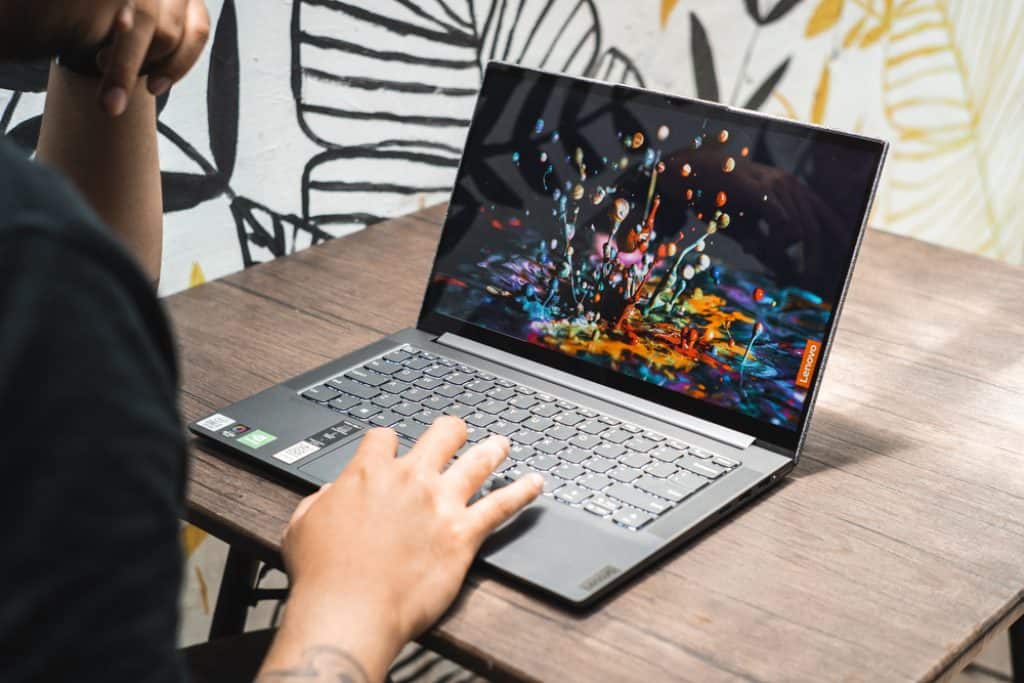I have critically analyzed the Razer Blade 15 base model’s design and CPU performance. Additionally, I also analyzed its RAM, Graphics, Storage, and battery performances. After each section of this review, I provide a rating for each feature. I also provide results from benchmark tests where necessary. Therefore, at the end of this review, you should be able to decide if this laptop is worth buying.
My Initial Thoughts
The Razer Blade 15 is regarded as one of the best gaming laptops out there. Razer made several configurations of the Razer Blade 15 Base Model. These different configurations are targeted at various users with varying needs and budgets. When Razer first released the Razer Blade 15, it was initially available as the Advanced Edition. A while later, Razer released a more affordable version. This newer version is called the Razer Blade 15 Base model. However, the Base Model cost $1,389 at the time this review was published. Therefore, the Base Model is still a high-end laptop.
Razer Blade 15 Base Model Design, Dimension & Weight Review
Not much has changed with the Razer Blade 15’s design. The Base Model still maintains this simple but chic taste. Likewise, it still has its all-aluminum chassis. However, the chassis is, unfortunately, still prone to fingerprints. More so, it is still available in two color options – black or mercury-white. The black color option is accompanied by the glossy green Razer logo. The logo illuminates when the lid is raised. In contrast, the white color option comes with a more subtle logo design. Thankfully, it isn’t as much of a fingerprint magnet as the black option. On opening the lid, you will notice the screen with extremely slim bezels around it. This is a similar feature to the Advanced edition. You also get a web camera. Unfortunately, the camera does not support Windows Hello for facial recognition. Moving your gaze to the deck, you’ll find the chiclet-styled keyboard. The keyboard is centered between two speakers, as usual. Moving on, the keys have shallow key travel. This usually results in a poor typing experience. However, the keys are pretty bouncy and do not require much force to actuate. In comparison with the Advanced edition, the arrow keys on the base model have been reduced in size. This change in size has made it difficult to navigate, especially in games that require navigation. On a brighter note, the reduction of the arrow keys has given the shift key enough space to stretch out. The increase in the size of the shift key is quite useful in gaming. Unlike the Advanced edition of this laptop, the keyboard sports a single-zone backlighting system. This means that all the keys have the same backlight. Furthermore, the single-zone backlight is a disappointing contrast to the per-key backlight of the Advanced edition. However, like in the Advanced edition, the backlight available in this model can also be configured via the Synapse software. Regrettably, another thing that has changed in the Base model is the missing fingerprint scanner. Therefore, in order to log in to Windows, you need to type in your password. Moving on to ports, the Base model also has an excellent selection of ports. On the right side of the laptop is the Thunderbolt 3 port for data transfer. The Thunderbolt 3 port can also be used as a fast-charging peripheral. Additionally, on the right side, the laptop has a type-A port, an HDMI port, a mini display port, and a Kensington lock slot. Furthermore, on the left side of the laptop, you’ll find two additional type-A ports. More so, there is a headphone jack that also serves as a microphone jack. However, unlike the advanced model, the base model, unfortunately, misses out on an SD Card reader. Impressively, the laptop has a Gigabit Ethernet port. The Ethernet port is not available even on the more pricey Advanced Edition. This ethernet port ensures a fast and stable connection when you’re working online. Therefore, this is an impressive feat for the Base Model. Meanwhile, Razer unarguably makes a good touchpad. The Blade 15 Base model glass touchpad is smooth and responsive. Moreover, I enjoyed gliding my fingertips over its surface as I executed Windows 10 gestures. These gestures include pinch-to-zoom and three-finger swipes to switch between browser windows. Moving on to the dimensions and weight, the Base model bags a dimension of 355 x 235 x 19.9 mm. It also has a weight of 2100g. Comparatively, the Base model is thicker than the Advanced model by about 2mm. Specifically, the Advanced model has a dimension of 355 x 235 x 17.8 mm. Additionally, the Base model is a bit smaller and lighter than HP Omen 15. The HP Omen 15 has a dimension of 357.8 x 239.7 x 22.6 mm. It also has a weight of 2458.4 g. Finally, as a result of its relatively excellent design, I will rate the Base model a seven.
Razer Blade 15 Base Model Processor (CPU) Performance Review
Razer equipped the Razer Blade Studio Edition with an Intel Core i7-10750H processor. This is a 6-core processor which has a base frequency of 2.60 GHz. Additionally, it has a boost frequency of 5.00 GHz. The Blade 15 had no problem running everyday computing tasks concurrently. This is evident in my multitasking test. In the test, I opened 20 Google chrome tabs. Despite these activities running at the same time, I didn’t notice any lags. Moreover, the laptop was quick to load web pages. Meanwhile, there were four 1080p resolution YouTube videos running in the background. In addition to that, I had multiple video games streaming on Mixer and Twitch. Overall, the laptop’s multitasking performance is top-notch. To further prove the performance of this laptop, I performed a Geekbench test. From the test result, Razer scored 1223 points. In comparison, this result lags behind the HP Omen 15, which scored 1272 points. The performance gap between the HP Omen 15 and Razer Blade Studio Edition is surprising since both laptops have the same Core i7-10750H processor. On the other hand, the Razer’s performance surpasses the Gigabyte Aorus 15G. The Gigabyte scored 1193 points. In conclusion, I will rate the processor’s performance of Razer Blade Studio Edition a seven in this review.
Razer Blade 15 Base Model Memory (RAM) Performance Review
Razer shipped the Base model with 16 GB DDR4 memory. Each of its two RAM slots can take a maximum of 8 GB of RAM. Unfortunately, there isn’t an option for an upgrade. This is because, as I hinted above, its maximum RAM capacity is 16 GB. However, the 16 GB RAM proved sufficiently capable of all the tasks I threw at it. To determine the RAM capabilities of the laptop, I performed a PCMark 10 test. Based on the result of the test, Razer scored 5150 points. However, this result lags behind the HP Omen 15 and Gigabyte Aorus 15G. Specifically, the Omen scored 6464 points, while Gigabyte scored 5419 points. Finally, I will rate the Razer Blade 15 Base Model a six for its modest RAM performance.
Razer Blade 15 Base Model Storage Options & Performance Review
The Razer Blade 15 Base Model comes in two storage configurations. It could come with a 256 GB SSD. You may also get one with 512 GB SSD. The unit I tested shipped with 256 GB SSD storage. To determine its storage performance, I performed some tests. In my test, the SSD duplicated 4.97GB of multimedia files in just 9 seconds. The file was duplicated at a speed of 565.5 MBps. In comparison, this speed comes short of the speed of the Omen 15. The Omen transferred the same file at 728.3 MBps. However, the 565.5 MBps of the Razer outraced the ROG Zephyrus G GA 502. The ROG duplicated the same files at 424 MBps. To further test the storage performance, I performed a CrystalDiskMark test. Based on this test result, the Razer Blade 15 Base Model recorded a sequential read speed of 2234 Mbps. It also recorded a sequential write speed of 2247 Mbps. Overall, I will rate the Razer Blade an eight for its impressive storage performance.
Razer Blade 15 Base Model Graphics Card Performance Review
Razer offers multiple GPU configuration options for the Blade 15 Base Model. Each GPU option comes with a price budget that suits its performance. You can choose a model with the GTX 1660 Ti graphics card. It is the lowest configuration available. This GPU configuration has 6GB GDDR6 memory. Moving up the line, you can also choose a configuration with the NVIDIA GeForce RTX 2060 GPU. This configuration also sports 6 GB GDDR6 memory. Lastly, Razer offers a GPU configuration with the NVIDIA GeForce RTX 2070 with Max-Q. This configuration is the most powerful among the Base Model range. Therefore, as expected, it is the most costly of all the configurations available. The RTX 2070 GPU with Max-Q has a whopping 8 GB GDDR6 memory! This is more than enough storage for all your graphical activities. In summary, whichever GPU configuration you choose, you still get an acceptable gaming performance. The unit I tested was shipped with an Nvidia GeForce RTX 2070 with Max-Q. To test the graphical performance of the laptop, I performed a 3DMark test Based on the outcome of the test, the Razer scored 6342 points. However, this result lags behind the HP Omen as well as the Gigabyte Aorus. Specifically, HP Omen 15 scored 6982, while Gigabyte Aorus 15G scored 7239 points. More so, to determine the gaming capability of the laptop, I performed some gaming tests. In the test, the laptop played Shadow Of The Tomb Raider at Ultra settings and 1080P resolution at 85 fps. Furthermore, at high settings and 1080P resolution, the game played at 94 fps. Moreover, at medium settings and 1080P resolution, the game played at 100 fps. Lastly, at low settings and 1080P resolution, the game was played at 129 fps. In conclusion, I will rate the GPU performance a seven in this review for its comparatively great gaming performance.
Razer Blade 15 Base Model Battery Life & Performance Review
The Razer Blade 15 Base model features a 65 WHr battery. This battery is expected to deliver up to 6 hours of battery life under regular usage. To determine the battery performance, I performed a battery test. This test involves continuous web surfing over Wi-Fi. The laptop’s screen brightness was set to 150 nits. Based on the test result, it is evident that the laptop has impressive battery gaming endurance. In the test, the Razer Blade 15 Base Model lasted 5 hours and 48 minutes. This surpasses the mainstream gaming category average of 4 hours and 1 minute. Moreover, the Razer’s performance also outpaced the Omen 15. The Omen lasted 3 hours and 15 minutes. Further proving the Razer’s performance, once again, it outperformed the ROG Zephyrus G GA50. The ROG also lasted 4 hours and 48 minutes. In conclusion, I will rate the Razer Blade 15 Base model a nine. This is a result of its excellent battery performance among competitors.
My Final Thoughts
If you’re looking for a premium gaming laptop, the Razer Blade 15 is a good choice. It has a great battery life, a premium build, a nice display, and a lot of storage. However, despite being called a “Base model,” it costs a whopping $1,389. Considering its price, it isn’t by any means a low-budget gaming laptop. I hope you found this Razer Blade 15 Base Model review helpful. If you found the review helpful, kindly spare a few minutes to share your thoughts with Itechguides Community Forum That’s not all, you can also ask questions or make comments regarding this guide’s topic at Itechguides Community Forum. Our forum staff and other community members will be delighted to provide a response to your questions or comments. Finally, for more laptop reviews, visit our Laptop Reviews page. You may also find our Laptop Specs page very helpful.













